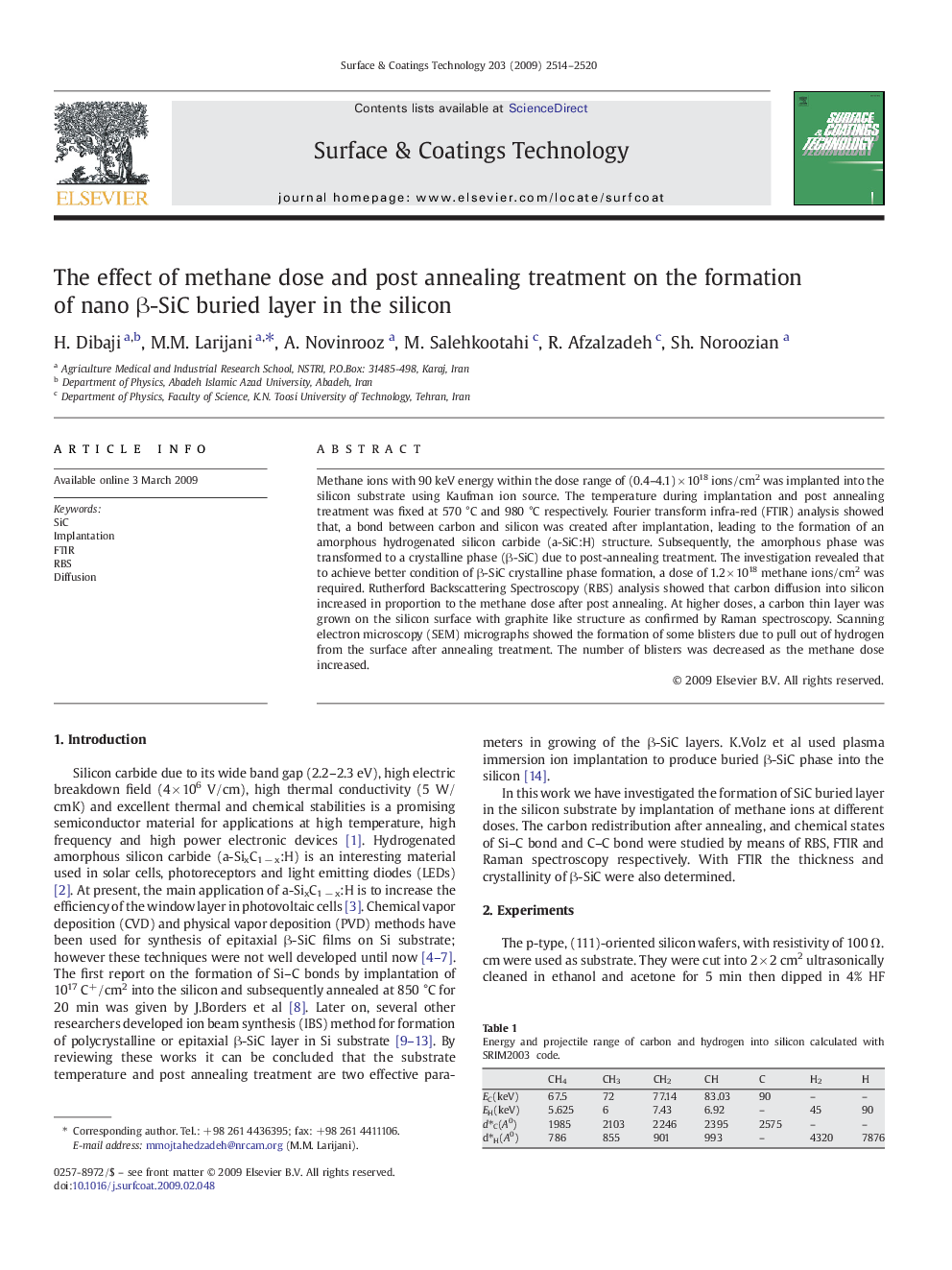| Article ID | Journal | Published Year | Pages | File Type |
|---|---|---|---|---|
| 1660167 | Surface and Coatings Technology | 2009 | 7 Pages |
Methane ions with 90 keV energy within the dose range of (0.4–4.1) × 1018 ions/cm2 was implanted into the silicon substrate using Kaufman ion source. The temperature during implantation and post annealing treatment was fixed at 570 °C and 980 °C respectively. Fourier transform infra-red (FTIR) analysis showed that, a bond between carbon and silicon was created after implantation, leading to the formation of an amorphous hydrogenated silicon carbide (a-SiC:H) structure. Subsequently, the amorphous phase was transformed to a crystalline phase (β-SiC) due to post-annealing treatment. The investigation revealed that to achieve better condition of β-SiC crystalline phase formation, a dose of 1.2 × 1018 methane ions/cm2 was required. Rutherford Backscattering Spectroscopy (RBS) analysis showed that carbon diffusion into silicon increased in proportion to the methane dose after post annealing. At higher doses, a carbon thin layer was grown on the silicon surface with graphite like structure as confirmed by Raman spectroscopy. Scanning electron microscopy (SEM) micrographs showed the formation of some blisters due to pull out of hydrogen from the surface after annealing treatment. The number of blisters was decreased as the methane dose increased.
